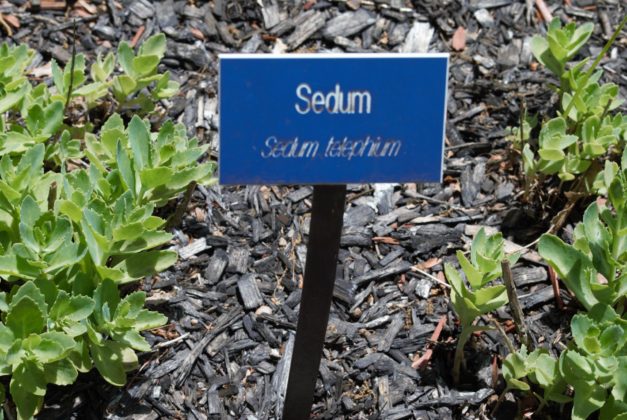With few exceptions, physical museums remain closed (COVID-19), but some are surrounded by beautiful grounds just asking to be visited. Dinosaur State Park in Rocky Hill is among them.

After locking up your bike at the rack by the giant bus shelter, you are greeted with the first of many interpretative signs. Don’t let the Walk Through Geologic Time distract you yet, as there is a kiosk to the left of this path that has trail maps you may want. You would not be in danger (probably) of needing a helicopter rescue if you chose to wander without seeing a map, but what it tells you is the type of terrain to expect.
Two of the trails are flat. Those are the ones you’d want if using a mobility device or schlepping kids in a stroller — though there is some boardwalk repair underway and you would have to turnaround at that point or find a way to step down. Speaking of, if you visited a long time ago and got the impression that the trails were shabby, it’s time to return to see how they’ve been spruced up.

These flat paths wind through swamplands where at minimum you will see deer tracks in the mud. Along the way you’ll encounter more interpretative signs that explain evolution and plate tectonics. You might bring binoculars to help you view the wildlife, especially in the red maple swamp where there is surround sound of frogs and birds.

The other two trails are a little more challenging and a lot more narrow. (Walking during pandemic? Bring and plan to properly wear that mask!) On the traprock ledge, you’ll be reminded why Rocky Hill is called that. DSP does not recommended open-toed shoes for those trails, and I don’t either. Hiking boots aren’t necessary, but something with a little grip is reasonable. With that said, you’ll be walking up hills, not mountains.

If you take the blue trail, you’ll see the landscape transition to meadows, then to the butterfly garden. Be on the lookout for rabbits!

Besides the nature trails, there’s an arboretum containing Mesozoic Era plants, including pawpaws and magnolia. It’s lovely and you’ll want to picnic; at the moment, that is a forbidden activity and there are numerous signs posted on site to inform you that if you get caught, there’s a fine.

How did this little park come about? In 1966, when nobody seemed to bat a lash over suburban sprawl, the State of Connecticut was preparing to build its State Highway Research and Materials Testing Laboratory. A bulldozer operator, Edward McCarthy, uncovered tracks and had the sense to say something about what he found. About thirty prints were discovered in shale when the story made its way to the newspapers. The State Highway project came to a screeching halt as scientists immediately recognized what a rare find this was in Connecticut. Within days of the discovery, the idea of a dinosaur park emerged and it was accepted in less than one month. That may be a record speed for anything happening in this state.

Surprisingly, the State wasn’t all sour grapes about the change in its construction plans — perhaps because they could see dollar signs in a future museum. Eventually, over 2,000 dinosaur tracks were uncovered, along with a fossilized fern. About 500 prints have been enclosed by the dome, and the remainder are under the lawn, in an area marked by small stones. As for the highway facility, that was later built at a site down the road.

I’m hopeful that the pandemic-related closures of indoor gyms, restaurant dining, and every kind of indoor entertainment compelled folks to spend more time exploring the outside world, enough so that new habits were formed and will be carried on long after the restrictions are eased. Having an appreciation for our environment may show why, beyond practical reasons, our habitat is worth protecting. Maybe we can postpone our own misery and extinction.

Getting There: If going by bike, any approach involves being on a busy road without much shoulder. Dinosaur State Park, however, has a bike rack located conveniently by the main entrance. The 47R bus, and possibly others, will get you close. There are no sidewalks along West Street, but if you do not require a complete flat surface, you can walk/ride bike on the grass.
There is no fee for exploring the outside portion of Dinosaur State Park.
Outdoors Is Not Extinct
With few exceptions, physical museums remain closed (COVID-19), but some are surrounded by beautiful grounds just asking to be visited. Dinosaur State Park in Rocky Hill is among them.
After locking up your bike at the rack by the giant bus shelter, you are greeted with the first of many interpretative signs. Don’t let the Walk Through Geologic Time distract you yet, as there is a kiosk to the left of this path that has trail maps you may want. You would not be in danger (probably) of needing a helicopter rescue if you chose to wander without seeing a map, but what it tells you is the type of terrain to expect.
Two of the trails are flat. Those are the ones you’d want if using a mobility device or schlepping kids in a stroller — though there is some boardwalk repair underway and you would have to turnaround at that point or find a way to step down. Speaking of, if you visited a long time ago and got the impression that the trails were shabby, it’s time to return to see how they’ve been spruced up.
These flat paths wind through swamplands where at minimum you will see deer tracks in the mud. Along the way you’ll encounter more interpretative signs that explain evolution and plate tectonics. You might bring binoculars to help you view the wildlife, especially in the red maple swamp where there is surround sound of frogs and birds.
The other two trails are a little more challenging and a lot more narrow. (Walking during pandemic? Bring and plan to properly wear that mask!) On the traprock ledge, you’ll be reminded why Rocky Hill is called that. DSP does not recommended open-toed shoes for those trails, and I don’t either. Hiking boots aren’t necessary, but something with a little grip is reasonable. With that said, you’ll be walking up hills, not mountains.
If you take the blue trail, you’ll see the landscape transition to meadows, then to the butterfly garden. Be on the lookout for rabbits!
Besides the nature trails, there’s an arboretum containing Mesozoic Era plants, including pawpaws and magnolia. It’s lovely and you’ll want to picnic; at the moment, that is a forbidden activity and there are numerous signs posted on site to inform you that if you get caught, there’s a fine.
How did this little park come about? In 1966, when nobody seemed to bat a lash over suburban sprawl, the State of Connecticut was preparing to build its State Highway Research and Materials Testing Laboratory. A bulldozer operator, Edward McCarthy, uncovered tracks and had the sense to say something about what he found. About thirty prints were discovered in shale when the story made its way to the newspapers. The State Highway project came to a screeching halt as scientists immediately recognized what a rare find this was in Connecticut. Within days of the discovery, the idea of a dinosaur park emerged and it was accepted in less than one month. That may be a record speed for anything happening in this state.
Surprisingly, the State wasn’t all sour grapes about the change in its construction plans — perhaps because they could see dollar signs in a future museum. Eventually, over 2,000 dinosaur tracks were uncovered, along with a fossilized fern. About 500 prints have been enclosed by the dome, and the remainder are under the lawn, in an area marked by small stones. As for the highway facility, that was later built at a site down the road.
I’m hopeful that the pandemic-related closures of indoor gyms, restaurant dining, and every kind of indoor entertainment compelled folks to spend more time exploring the outside world, enough so that new habits were formed and will be carried on long after the restrictions are eased. Having an appreciation for our environment may show why, beyond practical reasons, our habitat is worth protecting. Maybe we can postpone our own misery and extinction.
Getting There: If going by bike, any approach involves being on a busy road without much shoulder. Dinosaur State Park, however, has a bike rack located conveniently by the main entrance. The 47R bus, and possibly others, will get you close. There are no sidewalks along West Street, but if you do not require a complete flat surface, you can walk/ride bike on the grass.
There is no fee for exploring the outside portion of Dinosaur State Park.
Related Posts
Cool It
September 2014 Events
Gratitude…